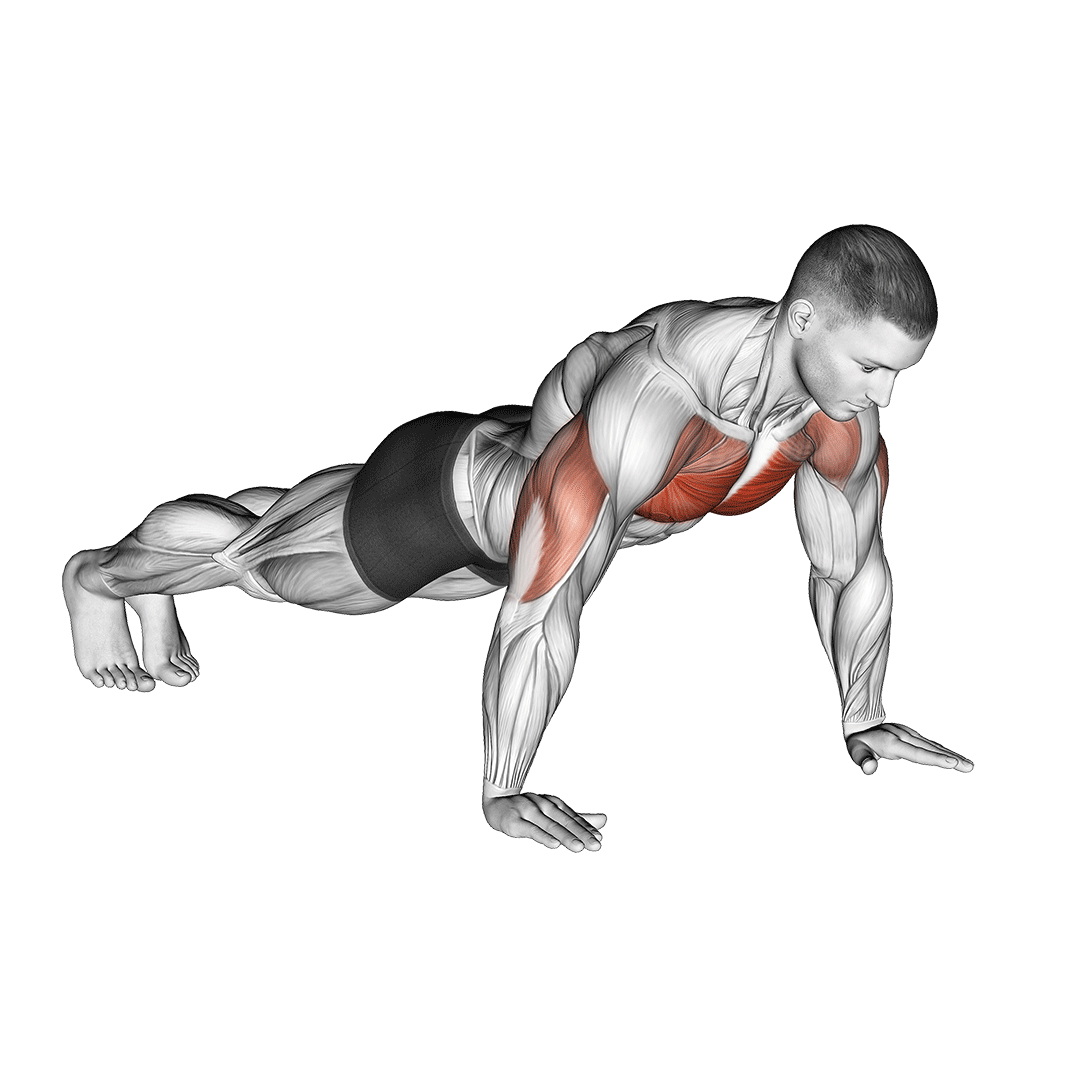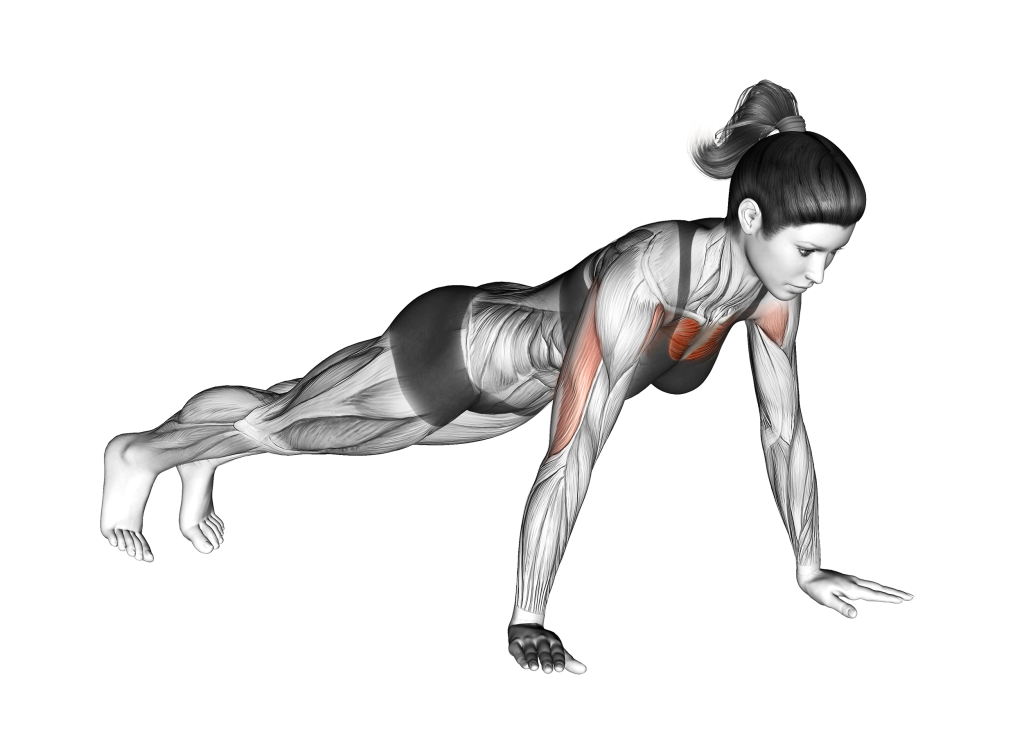Doing Pushups Before Bed: Will They do Anything?
We’ve all heard that regular exercise is good for you - but what if the exercise is push-ups performed before going to bed?
In truth, whether doing push-ups before bed is beneficial will depend on a number of factors, many of which have to do with how the push-ups are done.
Yes, performing push-ups before bed will impart quite a number of benefits - but care should be taken to not perform them too close to bedtime, and that a proper workout structure is followed so as to avoid overtraining or wasting your energy.
Why Should You Do Push-Ups Before Bed?
All forms of resistance exercise come with a variety of health benefits, some of which are more sought-after than others.
In the case of push-ups, regular performance can mean growing stronger and bigger muscles in the chest, shoulders and arms - but it could also mean more subtle improvements can take place, such as a reduced risk of developing cardiovascular conditions, and a gradual reduction in body fat composition.

Regardless of what time of the day these exercises are performed, the benefits will remain the same - but, there is also something to be said about performing push-ups too close to your bedtime, as doing so could potentially take the body out of “resting” mode, instead releasing endocrinological hormones that could potentially disrupt sleep.
How Long Before Sleeping Should the Push-Ups be Done?
Though studies vary on when exercise should be limited before bedtime, most recent publishings indicate that doing so at least an hour before falling asleep is perfectly fine.
Doing a few sets of push-ups at this point in the day will ensure that you reap all the benefits without risking the quality or length of your sleep.
The sole drawback to performing exercise so late in the day is the greater potential for physical fatigue - many individuals will find that they are at their physical best some time in the morning or afternoon, rather than near bedtime.
How to Do Push-Ups Properly
Before we get into the specific benefits of doing push-ups before bed, it is important to ensure that the push-up is being performed with correct form.
Performing push-ups improperly can easily negate the many positive effects that come with it, if not result in acute injury.
Setting the Stance Up
Before beginning each repetition of the push-up, it is important to ensure that your stance is correct.

To begin, enter a plank position on the floor, with the palms flat on the ground and laterally parallel to the shoulders.
The hands should also be set wider than shoulder-width apart. The feet may be set together or further apart, depending on your stability preferences - wider is more stable and involves less core work.
Then, before beginning the first repetition, the core should be contracted and the glutes squeezed so as to make the torso rigid and the lower back relatively flat.
The Eccentric Phase
The initial phase of the repetition begins with the elbows bending as the exerciser lowers their chest to the floor in a slow and controlled manner, focusing on contracting their pectoral muscles.

Once the chest is within several inches of touching the ground, the exerciser will pause before continuing to the next phase of the repetition.
The Concentric Phase
To complete the second phase of the push-up repetition, the exerciser will push through their palms and extend their elbows, rising from the floor until the elbows are nearly locked out.

Once the exerciser has returned to the original plank stance, the repetition is considered to be complete.
What are the Benefits of Doing Push-Ups Before Bed?
Apart from the usual benefits that come with exercise (i.e. cardiovascular health and a stronger immune system), doing push-ups before bed can actually impart several other advantages that many individuals are unaware of.
Tones Your Chest, Arms, and Shoulders
The push-up works muscles like the pectorals, triceps and deltoids - meaning that, with regular performance, exercisers will find that areas like their chest, arms and shoulders are growing in both muscular definition and size.
This phenomenon is known as muscular hypertrophy, and is primarily achieved through regular participation in resistance exercises like the push-up, squat or pull-up.
For the best results, pair push-ups with adequate protein intake and sufficient recovery time, as doing so will maximize the amount of muscle mass packed on by your training.
Burns a Few Calories
Exercise takes energy, meaning that regularly engaging in it will take more physical energy than would be used in the case of a sedentary individual.
Such an effect is colloquially referred to as “burning calories”, as the body sources said energy from the food an individual consumes.
While the amount of calories burned by a few sets of push-ups is not exactly plentiful, it is nonetheless better than just sitting on the couch, and can contribute (in some small part) to an individual’s weight loss journey.
To burn even more calories, exercisers may wish to pair push-ups with aerobic exercise like using a stationary bike, jump rope, or performing burpees.
Better Sleep Quality
While most individuals anecdotally know that being physically tired makes for better sleep, studies further confirm this idea by showing that exercise in the evening (or before bed) allow individuals to fall asleep faster, remain asleep for a longer period, and ensures that said sleep is of comparatively higher quality.
While it is unlikely that a few sets of push-ups can cure chronic insomnia, those with too much energy to fall asleep may find that they are the perfect solution.
Fatigue Won’t Affect Daily Activities
Exercisers that engage in intense morning training may find that their physical abilities are hampered later during the day, as they have expended much of their strength during their early-morning workout session.
This is not so much an issue for individuals that perform their training in the evening, as the night of rest after the fact allows them to awaken in a recovered state.
As such - if you find that doing push-ups in the morning makes your arms shaky during the day, try moving your workout session to the nighttime.
Muscles are Guaranteed to be Fueled
Anyone who has done fasted cardio can speak of how draining working out without fuel for the body can be - something that is not as much of an issue for push-ups performed near bedtime.
Unless you’re participating in an extreme version of intermittent fasting, it is pretty likely that your muscles have had their glycogen stores replenished by a meal earlier in the day, thereby priming them for a few sets of push-ups near bedtime.
For the best results, it is a good idea to schedule the workout several hours after dinner time, as the body diverts a significant amount of blood flow and energy to digesting food.
What Muscles are Trained by Push-Ups?
Push-ups are known as a compound exercise, meaning that they work more than one muscle at a time. These muscles are not all trained to the same extent, however, and are usually categorized by the role they play within the context of the exercise.
The muscles worked to the greatest degree are called primary mover muscles, whereas muscles worked to a lesser degree are called secondary mover muscles, and those used for stabilizing the body are called stabilizers.
Primary Mover Muscles
Push-ups work the pectorals, anterior deltoid head and triceps to the greatest degree, meaning that it is these muscles that also receive the greatest growth.
Secondary Mover Muscles and Stabilizing Muscles
Push-ups will also train the serratus anterior as a secondary mover muscle, and the abs, forearms and glutes as stabilizer muscles.
How Many Push-Ups Should be Done a Night?
How many push-ups should be done before bed will depend on two factors:
- The level of conditioning that the exerciser’s body is at
- The perceived exertion from a given number of push-up repetitions.
Ideally, exercisers will wish to perform enough volume to challenge their body, but at a low enough intensity that it does not disrupt the quality of their sleep.
This is variable between individuals, but a good starting point would be to perform 3 sets of 10-20 repetitions each, increasing the volume if the muscles do not feel adequately worked.
For Novice Exercisers
If performing the aforementioned 3 sets of push-ups is too difficult, it is entirely possible to instead perform knee-ups, of which are far easier and should allow for sufficient volume to be performed.

3 sets of 10 repetitions of knee-ups is an ideal starting point for novice exercisers, who may then transition to conventional push-ups once they are capable of performing at least 20 repetitions consecutively.
For More Advanced Exercisers
On the opposite end, exercisers who already have some training under their belt may find 3 sets of 10-20 repetitions insufficient. In that case, they may try more complex variations like the decline push-up and archer push-up - or instead double the amount of volume they are performing.
Frequently Asked Questions (FAQ)
What if You Do Push-Ups Every Night?
Resistance training causes the muscles of the body to sustain minuscule tears - tears that require recovery time in order to heal.
As such, performing push-ups every single night can overwhelm the body’s recovery process, leading to overtraining, injuries and generally poor results.
In order to ensure that the muscles are given sufficient time to heal, it is best to take at least one day between workouts of the same exercises.
When is the Best Time to Do Push-Ups?
The best time to perform exercises like the push-up is when your energy is at its highest and your glycogen stores are full - meaning several hours after breakfast or during the mid-afternoon, depending on your lifestyle and individual body clock.
In truth, the actual time in which push-ups are performed has little impact on the benefits it can provide. Instead, aim to perform your push-ups at a recurring time so as to build discipline and good exercise habits.
Can You Get a Big Chest With Just Push-Ups?
Yes - push-ups are great for growing the pectoral muscles that make up the chest. When combined with other movements like chest flys and dips, exercisers can induce a significant amount of mass growth in their upper body.
For the best results, combine regular exercise with sufficient recovery time and an adequate diet.
A Few Reminders
Now that we’ve established whether you should do push-ups before bed, here are a few things to keep in mind.
Apart from ensuring that the exercise is not too intense, it is also vitally important to perform push-ups with the correct form and programming, as errors in either aspect can result in painful injuries or wasted growth.
Furthermore, push-ups alone are insufficient if you are truly serious about training - in order to avoid muscular imbalances, exercises that target the rest of the body should also be performed.
Ideally, an entire workout before bed is the best choice, rather than simply a few sets of push-ups. If you do not have access to a gym, exercises like the bodyweight squat and pull-up will work perfectly in the same workout as push-ups.
References
1. Banno M, Harada Y, Taniguchi M, Tobita R, Tsujimoto H, Tsujimoto Y, Kataoka Y, Noda A. Exercise can improve sleep quality: a systematic review and meta-analysis. PeerJ. 2018 Jul 11;6:e5172. doi: 10.7717/peerj.5172. PMID: 30018855; PMCID: PMC6045928.
2. Artero EG, Lee DC, Lavie CJ, et al.. Effects of muscular strength on cardiovascular risk factors and prognosis. J Cardiopulm Rehabil Prev. 2012;32(6):351-358. doi: 10.1097/HCR.0b013e3182642688
